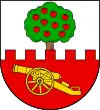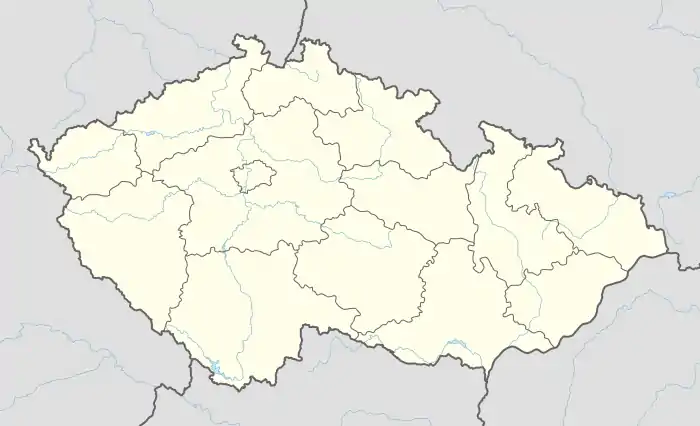Sadová
Sadová (German: Sadowa) is a village of the Hradec Králové District in the Hradec Králové Region of the Czech Republic. It lies on the Bystřice river, about 15 km (9.3 mi) northwest of Hradec Králové on the main road and railway line to Jičín. The municipality is part of Mikroregion Nechanicko. In 2004, it had 127 houses and 325 inhabitants.
Sadová | |
|---|---|
Village | |
 Tombstones from the Battle of Königgrätz | |
 Flag  Coat of arms | |
 Sadová Location in the Czech Republic | |
| Coordinates: 50°16′N 15°42′E | |
| Country | Czech Republic |
| Region | Hradec Králové |
| District | Hradec Králové |
| First mentioned | 1241 |
| Government | |
| • Mayor | Dušan Jedlička |
| Area | |
| • Total | 2.06 km2 (0.80 sq mi) |
| Elevation | 259 m (850 ft) |
| Population (2006-07-03) | |
| • Total | 331 |
| • Density | 160/km2 (420/sq mi) |
| Time zone | UTC+1 (CET) |
| • Summer (DST) | UTC+2 (CEST) |
| Postal code | 503 15 |
| Website | https://www.obec-sadova.cz/ |
The village was first mentioned in a 1241 deed. In 1636 Sadová was part of the Smiřice lordship acquired by the Imperial General Lieutenant Matthias Gallas, who thereby reaped the awards for his conspiration against Generalissimo Albrecht von Wallenstein. In the 18th century it was a possession of the Schaffgotsch noble family, later of the House of Harrach residing at Hrádek u Nechanic. During the War of the Bavarian Succession, Habsburg troops occupied the heights above the city from July to October; Prussian troops occupied the territory between Sadová and Nachod. Neither army engaged in combat, although the imperial forces frequently shelled the Prussians, and both armies ravaged the countryside for foodstuffs.
On July 3, 1866, the area around Sadová became the scene of the sanguinary Battle of Königgrätz, also known as the Battle of Sadowa, the decisive combat of the Austro-Prussian War. There are many monuments and graves in and around Sadová commemorating this event. The main battlefield and museum is located in the nearby village of Chlum (part of the Všestary municipality) about 4 km (2.5 mi) to the southwest.
Despite France being neutral in that war, the French public resented the Prussian victory and demanded "Revanche pour Sadova" (Revenge for Sadowa),[1] which was one factor leading to the Franco-Prussian War of 1870.